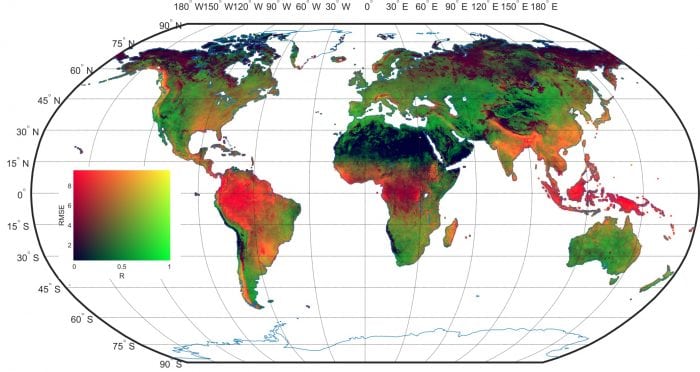
Rainfall is the main driver of the hydrological cycle. Its estimation is fundamental in many applications like climate monitoring, extreme weather prediction, and weather forecasting. Rainfall at the ground level is measured by instruments called rain gauges. However, the number of rain gauges is limited and unevenly distributed over the world.
Alternatively, we can use remote sensing that guarantees global coverage and repetitive measurements. Space agencies have been launching missions explicitly dedicated to rainfall measurement through a “top-down” approach, which provides instantaneous rainfall estimates based on the inversion of the atmospheric signals reflected or radiated by clouds. However, snapshot measurements might not be able to accurately estimate rainfall, due to its high intermittency.
An alternative and innovative approach, named SM2RAIN, has been developed 5 years ago by the Hydrology group of the Research Institute for Geo-Hydrological Protection of the National Research Council in Italy. SM2RAIN is able to estimate rainfall through measurements of soil moisture following a “bottom-up” approach. Since the first publication (Brocca et al., 2013), SM2RAIN has been continuously improved and employed in numerous analyses from local to global scale (Brocca et al., 2017).
Comparisons with the state-of-the-art “top-down” satellite rainfall products, demonstrated that SM2RAIN often results more accurate, especially in Southern Africa, Southern America, India, Australia, Western USA, and Southern Europe (Ciabatta et al., 2018; Massari et al., 2017). Also, the integration of the highly complementary “bottom-up and “top-down” approaches already provided very promising results (Chiaravallotti et al., 2018).

Global scale performance of the recent SM2RAIN-ASCAT rainfall product (1-day, 12.5 km resolution): Correlation (R) and Root Mean Square Error (RMSE) in a single map for the comparison with ERA5 ECMWF reanalysis in the period 2012-2017. Credit: Luca Brocca
A very recent application of SM2RAIN has been proposed in Tarpanelli et al. (2017) who exploited a constellation of satellite soil moisture sensors (Advanced SCATterometer, ASCAT; Advanced Microwave Scanning Radiometer 2, AMSR-2; Soil Moisture Active and Passive mission, SMAP; Soil Moisture and Ocean Salinity mission, SMOS, and RapidScat) for estimating rainfall.
The authors demonstrated that the joint use of multiple soil moisture sensors improves not only the temporal resolution but also the accuracy, thus providing a superior “bottom-up” rainfall product with performance comparable or better than the products derived from the new Global Precipitation Measurement (GPM) mission by NASA. Among the real-world applications, SM2RAIN-derived rainfall products are highly useful for improving floods and landslides prediction (Massari et al., 2018), for water budget modeling (Abera et al., 2016), and for climate and agricultural applications (Brocca et al., 2017).
Among the future applications, the use of high-resolution soil moisture product from the new ESA mission, Sentinel-1, will be an important extension of the analysis to obtain a rainfall product with 1-km spatial resolution. Luca Brocca, the author of the first paper on SM2RAIN says “It is now possible to obtain satellite soil moisture data at 100 m or even 10 m resolution, which of course changes the number of potential applications which could get benefit from them. For example, in Italy and in the Mediterranean area, we have the problem of flash floods. These types of floods evolve very quickly in small to medium catchments and are very difficult to predict. These new satellite products could help us with that. I am guessing these new high-resolution products will be available in the next 1 or 2 years.”
These findings are described in the article entitled Exploiting a constellation of satellite soil moisture sensors for accurate rainfall estimation, recently published in the journal Advances in Water Resources. This work was conducted by A. Tarpanelli, C. Massari, L. Ciabatta, L. Brocca, and P. Filippucci from the Research Institute for Geo-hydrological Protection, and G. Amarnath from the International Water Management Institute.









